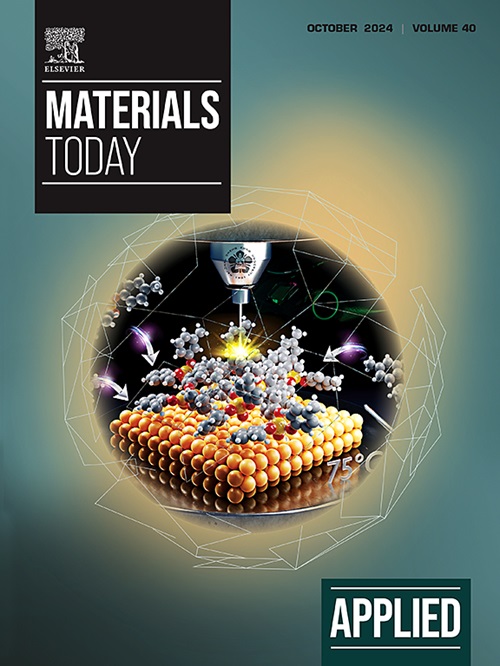具有更强抗疲劳性的生物相容性 WPU/PVA 复合水凝胶的设计与分子动力学:弹性体分子间团簇的能量耗散
IF 6.9
2区 材料科学
Q1 MATERIALS SCIENCE, MULTIDISCIPLINARY
引用次数: 0
摘要
要设计出可用作体内组织替代物的水凝胶弹性体,就必须确保其具有出色的抗疲劳性,从而延长其使用寿命。研究弹性材料压缩过程中应变能积累和传递的分子机制,有助于阐明水凝胶材料疲劳的原因。这些见解对于开发耐用的人工组织替代品,确保其在人体内的寿命和持续功能具有巨大价值。我们通过聚乙烯醇(PVA)和水性聚氨酯(WPU)合成了具有良好生物相容性的水凝胶弹性体,并通过分子动力学(MD)研究了它们的疲劳行为。分析结果表明,在机械支撑的分子框架之间引入消能结构可以提高聚合物的松弛效率。这种改善提高了水凝胶的抗压缩疲劳能力。我们总共进行了 1,000,000 次压缩测试,验证了 WPU/PVA 在 50% 应变的高应力下没有表现出任何明显的压缩疲劳。相比之下,PVA 水凝胶由于缺乏能量耗散结构而表现出明显的疲劳。这些结果揭示了水凝胶弹性抗压缩疲劳的来源,为人工组织的设计和合成提供了有力的指导。本文章由计算机程序翻译,如有差异,请以英文原文为准。
Design and molecular dynamics of biocompatible WPU/PVA composite hydrogels with enhanced fatigue resistance: Energy dissipation of intermolecular clusters for elastomers
To engineer a hydrogel elastomer for use as an in vivo tissue replacement, it is imperative to ensure superior fatigue resistance, guaranteeing a prolonged service life. Investigating the molecular mechanisms of strain energy accumulation and transmission, which occur during the compression of elastomeric materials, is instrumental in elucidating the causes of hydrogel material fatigue. Such insights are of immense value for the development of durable artificial tissue replacements, ensuring their longevity and sustained functionality within the human body. We synthesized hydrogel elastomers through polyvinyl alcohol (PVA) and waterborne polyurethane (WPU) with good biocompatibility, and studied their fatigue behavior through molecular dynamics (MD). The results of this analysis demonstrate that the introduction of energy dissipation structures between mechanically supported molecular frameworks can enhance the relaxation efficiency of polymers. This improvement leads to enhanced resistance of hydrogels to compression fatigue. A total of 1,000,000 cycles of compression tests were conducted to verify that WPU/PVA did not exhibit any significant compression fatigue under high stress of 50 % strain. In contrast, PVA hydrogel exhibited obvious fatigue due to the absence of an energy dissipation structure. These results revealed the source of compression fatigue resistance of hydrogel elasticity and provided powerful guidance for the design and synthesis of artificial tissues.
求助全文
通过发布文献求助,成功后即可免费获取论文全文。
去求助
来源期刊

Applied Materials Today
Materials Science-General Materials Science
CiteScore
14.90
自引率
3.60%
发文量
393
审稿时长
26 days
期刊介绍:
Journal Name: Applied Materials Today
Focus:
Multi-disciplinary, rapid-publication journal
Focused on cutting-edge applications of novel materials
Overview:
New materials discoveries have led to exciting fundamental breakthroughs.
Materials research is now moving towards the translation of these scientific properties and principles.
 求助内容:
求助内容: 应助结果提醒方式:
应助结果提醒方式:


